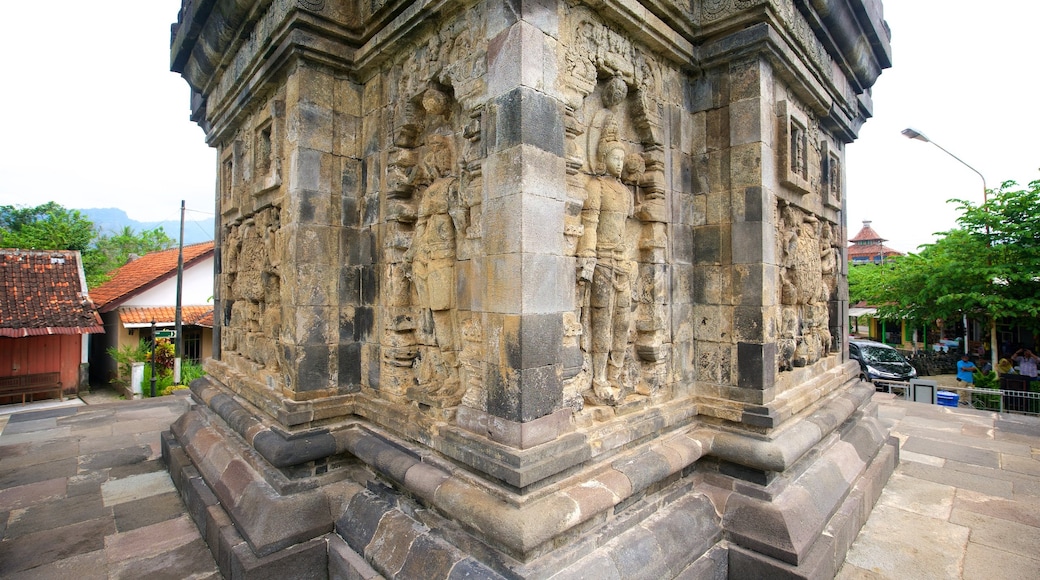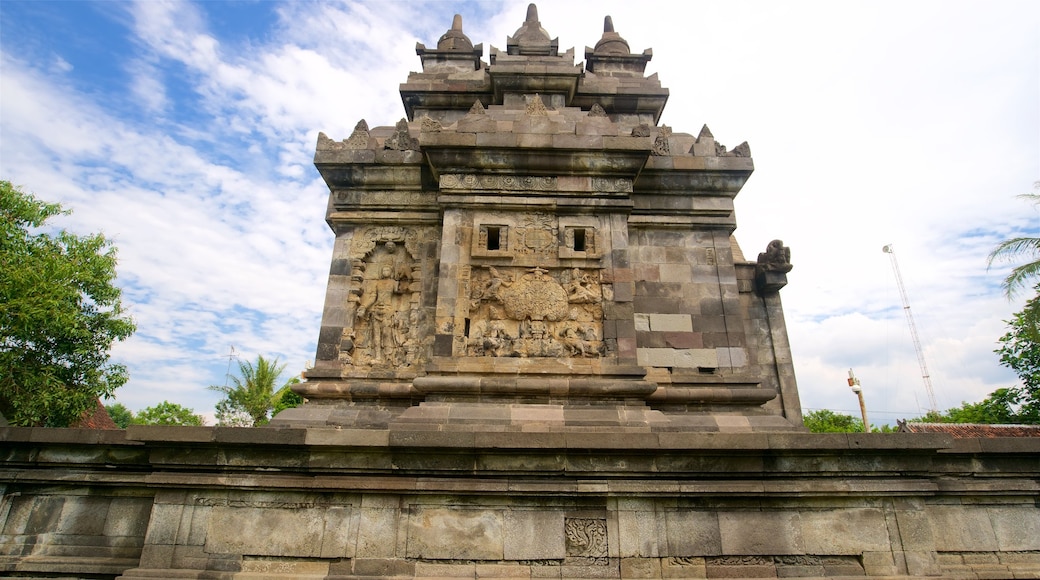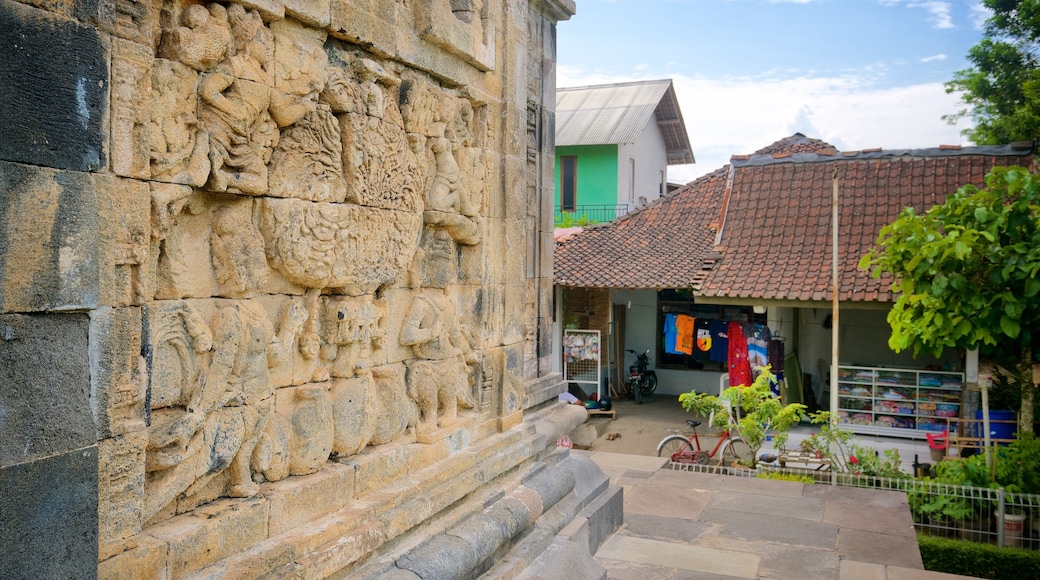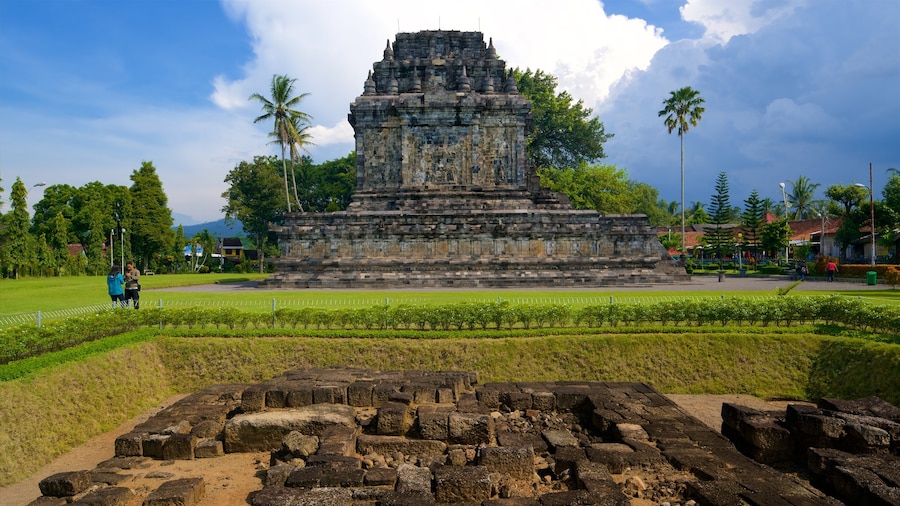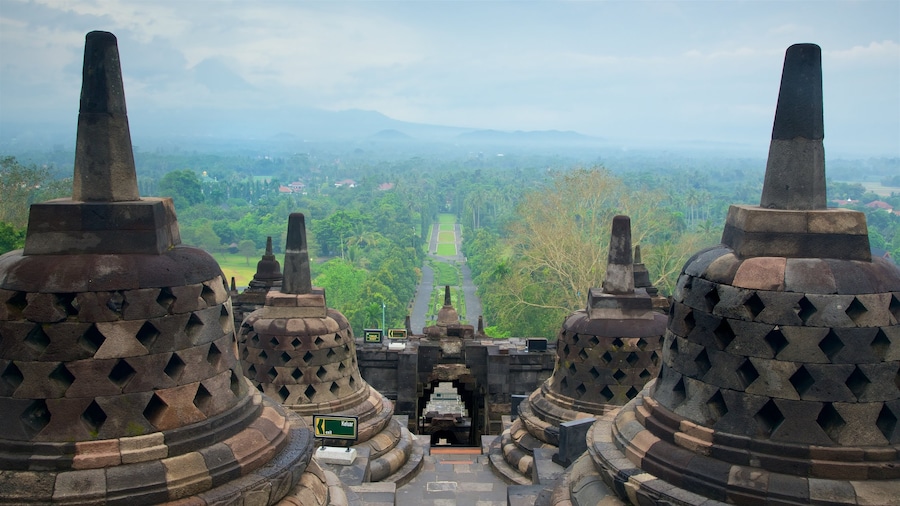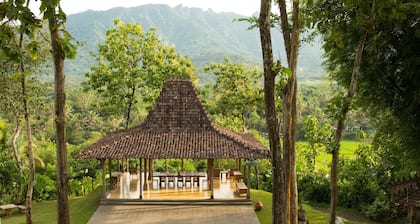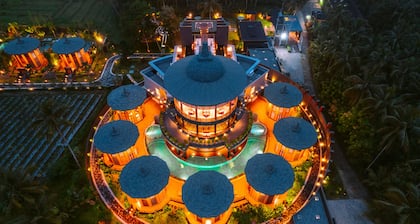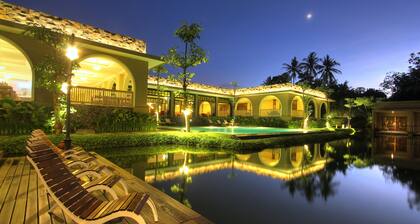Pawon Temple, also known as Candi Pawon, is a small but architecturally perfect site of Buddhist worship. Its flawless symmetry and elaborate details are all the more impressive when you consider that it was built hundreds of years ago. Admire its astonishing craftsmanship while you ponder the mysteries that still surround its original purpose to this day.
The temple was likely built in the 9th century, as were the two larger Buddhist temples nearby, Mendut Temple and Borobudur Temple. The three are believed to share a symbolic connection, as they were built in a perfectly straight line. The exact nature of this connection is unknown, as is the original purpose of Pawon Temple. There is some evidence that the temple was once a royal tomb or cremation site, but the identity of the monarch who may have been buried here is unknown.
It’s hard not think of this mystery as you explore the temple. Walk towards it and imagine an ancient funeral procession marching towards this beautiful structure. Every angle of this neat little building holds some beautiful detail. Give yourself plenty of time to look at the stunning carvings all around the entrance. These include Kala-Makara, traditional Indonesian head carvings that combine human and animal elements.
Walk around the building and pick out the detailed human figures that adorn its exterior walls. Then enter the temple and enjoy a moment of peace. There is little to look at in the inside, as the architecture here is quite simple and without much decoration. However, the atmosphere is quiet and calming. Enjoy taking some time to think about the history of this spiritual place.
There is a small entrance fee you must pay in order to visit Pawon Temple. Remember to dress modestly to show your respect for the religious importance of this site. The temple is around 1 mile (2 kilometers) from the more famous Borobudur, so combine both into one daytrip. Allow over an hour to get from Yogyakarta to Pawon Temple by taxi, then walk the short distance to Borobudur.


